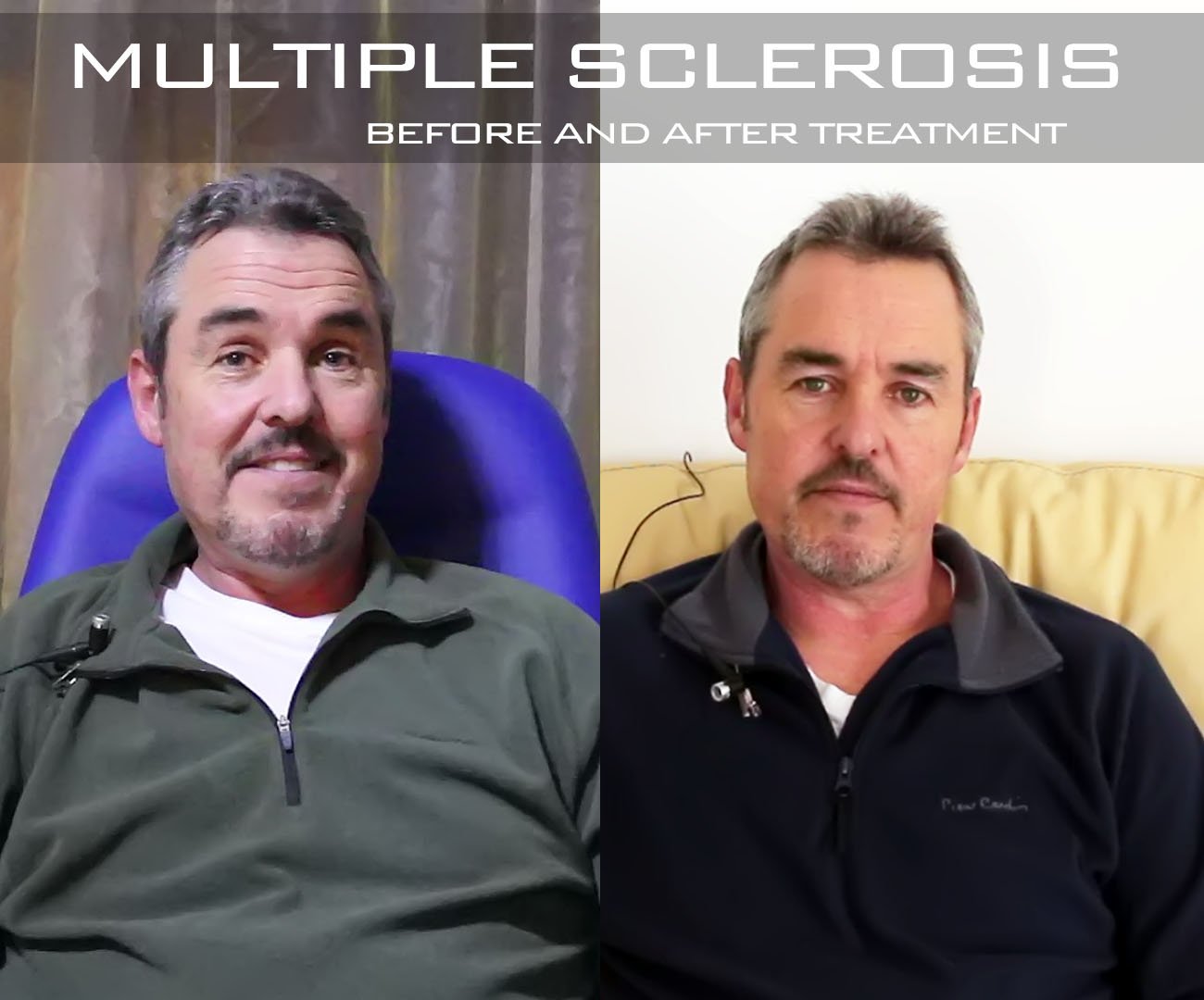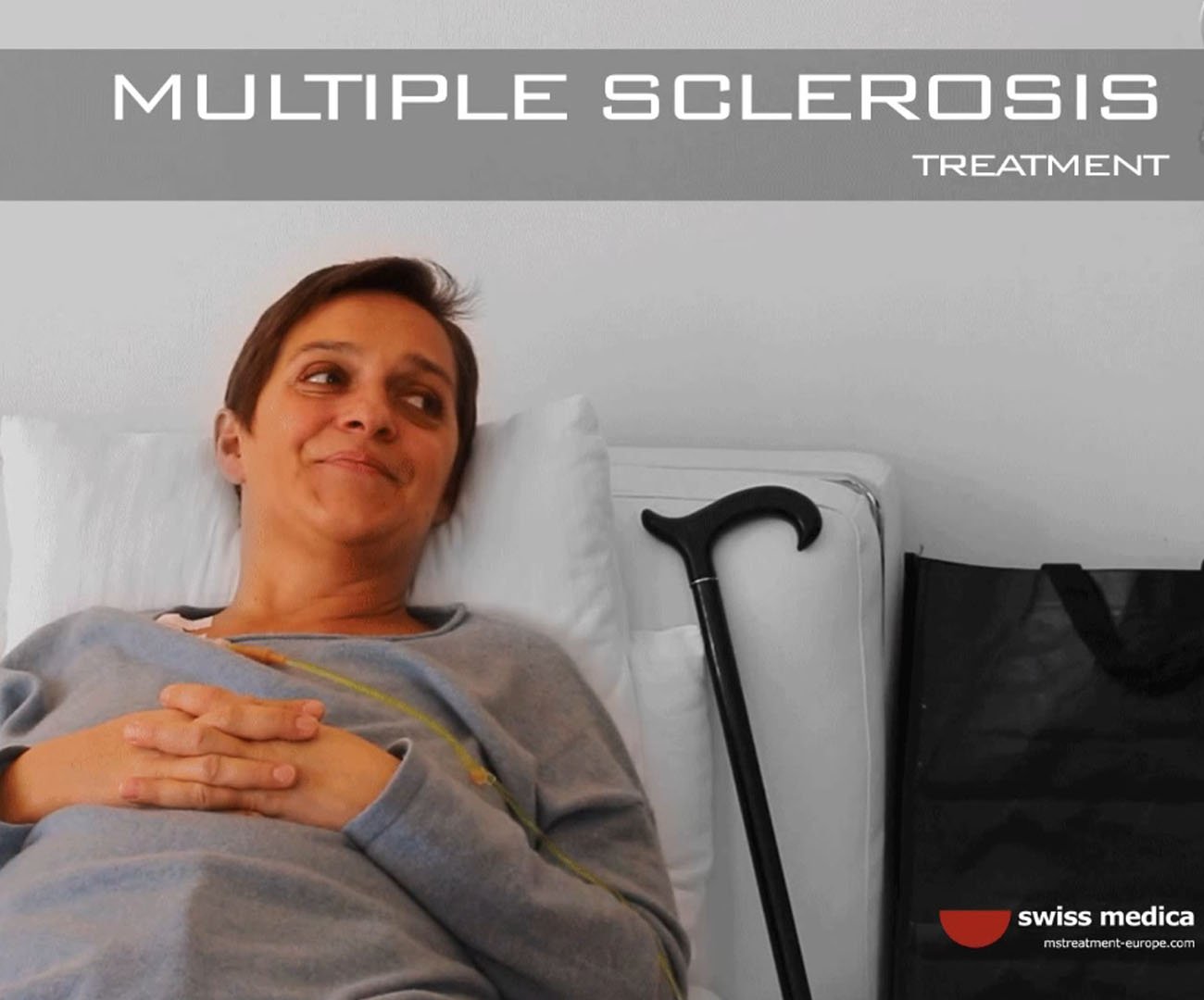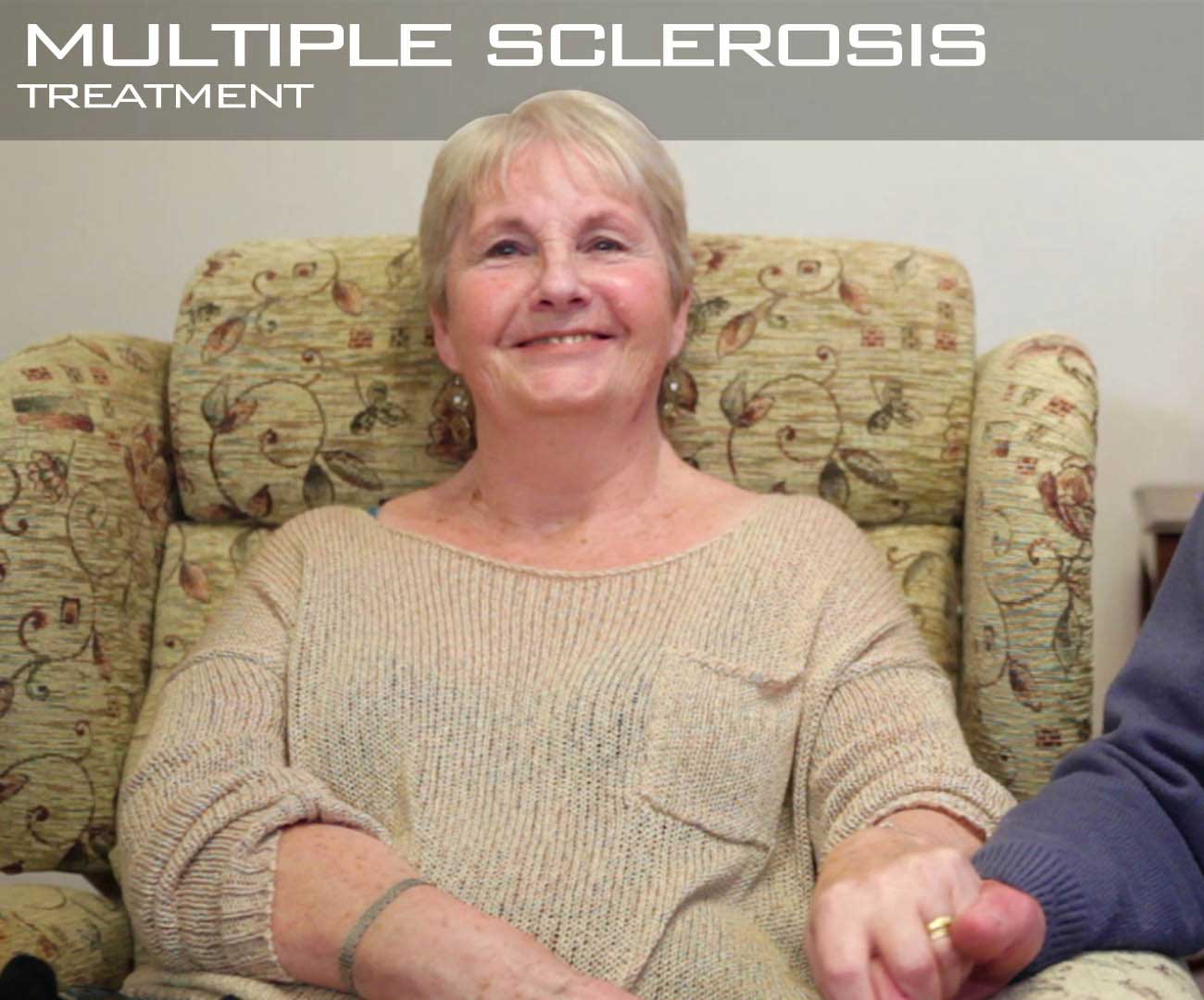TRUTH ABOUT HSCT FOR MS
HSCT or Hematopoietic Stem Cell Transplant is gaining a lot of attention lately as an effective treatment for Multiple sclerosis, but downsides, side-effects and serious risks are often overlooked.
HSCT IN A NUTSHELL
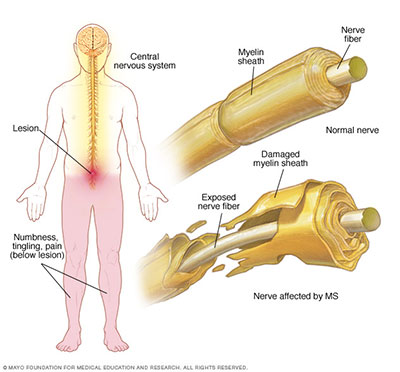 MS is an autoimmune disorder affecting the central nervous system in which the myelin sheath (insulating covers of nerve cells in the brain and spinal cord) are damaged by person’s own immune system. Basically, the immune system becomes tricked into confusing the myelin sheath as a foreign matter. By doing what the immune system does best - defend the organism against the “foreign” attackers, signals from the brain to the rest of the body become compromised.
MS is an autoimmune disorder affecting the central nervous system in which the myelin sheath (insulating covers of nerve cells in the brain and spinal cord) are damaged by person’s own immune system. Basically, the immune system becomes tricked into confusing the myelin sheath as a foreign matter. By doing what the immune system does best - defend the organism against the “foreign” attackers, signals from the brain to the rest of the body become compromised.
So, the creation of HSCT comes from an idea that destroying the old “confused” immune system with chemotherapy and creating a new one using a stem cells transplant, stops the MS activity and progression.
DOWNSIDES, SIDE-EFFECTS AND RISKS OF HSCT
Basically, Hematopoietic Stem Cell Transplant consists of two main stages:
- Chemotherapy
- Stem cells transplant
Unfortunately, since it involves the use of chemotherapy:
1. HSCT is not for every MS patient
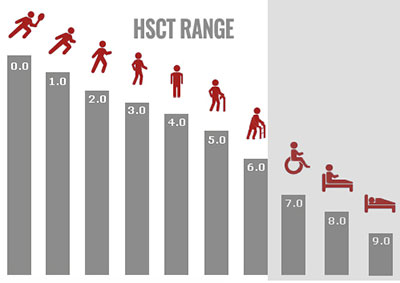 Not every MS patient is eligible for HSCT. MS patients that are excepted for HSCT must have Expanded Disability Status Scale (EDSS) equal or lower than 6.0. Further on, patients that are older than 40 years of age and had been diagnosed more than 5 years preceding their HSCT had poor treatment outcomes.
Not every MS patient is eligible for HSCT. MS patients that are excepted for HSCT must have Expanded Disability Status Scale (EDSS) equal or lower than 6.0. Further on, patients that are older than 40 years of age and had been diagnosed more than 5 years preceding their HSCT had poor treatment outcomes.
2. HSCT has troublesome aspects
• Hickman line
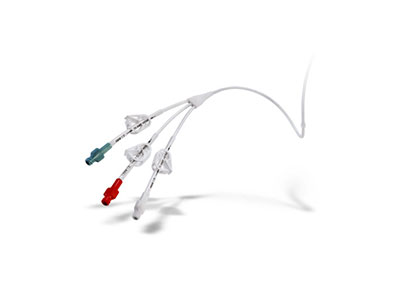 Chemotherapy requires an insertion of Hickman line at the start of the treatment. A long silicone tube is inserted into a vein in the neck or under the collar bone that branches into, usually, two or three separate intravenous lines.
Chemotherapy requires an insertion of Hickman line at the start of the treatment. A long silicone tube is inserted into a vein in the neck or under the collar bone that branches into, usually, two or three separate intravenous lines.
The skin gets sore and bruised at the insertion site and is pretty uncomfortable around patients neck and collarbone. It has to be flushed regularly to prevent blood clots from blocking it and cleaned and disinfected to prevent serious infections that HSCT patients (with immune system shutting down) are susceptible to. Hickman line stays in place throughout the treatment, until all of the planned chemotherapy procedures are finished.
• Isolation
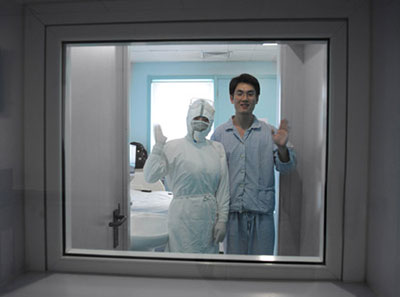 Isolation after chemotherapies is something that HSCT patients are often troubled with. Due to non-existing immune system, the patient is vulnerable to a wide variety of bacterial, fungal, viral infections and sepsis and therefore quarantined in the “clean room” without outside contact (no visitation from friends and family). Only a limited number of necessary medical personal have contact with the patient. Depending on the patient’s condition and the speed in which the immune system starts to rebuild itself the isolation lasts for no less than three weeks but in some cases, up to five months and more.
Isolation after chemotherapies is something that HSCT patients are often troubled with. Due to non-existing immune system, the patient is vulnerable to a wide variety of bacterial, fungal, viral infections and sepsis and therefore quarantined in the “clean room” without outside contact (no visitation from friends and family). Only a limited number of necessary medical personal have contact with the patient. Depending on the patient’s condition and the speed in which the immune system starts to rebuild itself the isolation lasts for no less than three weeks but in some cases, up to five months and more.
After the discharge from the hospital, follows a period of limited activities and socializing. The immune system gradually rebuilds starting from six months after the treatment, but return to normal activities is not recommended for the next year or 18 months. In the meantime, the patient must be accommodated in the clean environment, avoid crowded places (the body is still prone to infections) and must eat specially prepared food (due to digestive disorders caused by chemotherapies, and low ability to sustain even mild food poisoning). Fruits and vegetables have to be washed thoroughly. Meats, eggs and other animal source food have to be fully cooked (no “rare”, or “medium well” stakes).
• Consequences of chemotherapy
- Vulnerability to a wide variety of bacterial, fungal and viral infections, and sepsis
- Toxicities – lungs, kidneys
- Irritations in the mouth and gastrointestinal tract
- Urinary tract infections
- Thinning and loss of hair
- Risk of infertility
- Inflammation of the liver
- Cognitive problems may worsen due to effects of chemo on the brain
- Thyroid problems
- Fatigue
- Nausea
- Appetite problems
3. HSCT requires Revaccination-Reimmunization
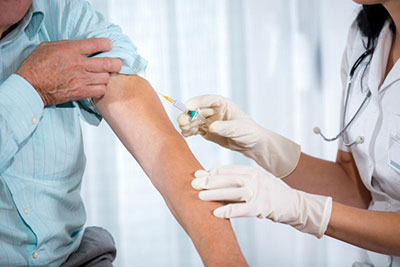 For patients that have gone through HSCT and got their immune system “re-set”, the loss of pre-treatment immunity (including childhood vaccination) is inevitable and therefore post-chemo patients are considered as “never vaccinated” resulting in need for specific reimmunization, and some additional necessary vaccination (this includes family members and caretakers that the patient is in frequent contact) not otherwise mandatory for persons with regular immune system
For patients that have gone through HSCT and got their immune system “re-set”, the loss of pre-treatment immunity (including childhood vaccination) is inevitable and therefore post-chemo patients are considered as “never vaccinated” resulting in need for specific reimmunization, and some additional necessary vaccination (this includes family members and caretakers that the patient is in frequent contact) not otherwise mandatory for persons with regular immune system
- Influenza Vaccine - HSCT patients should be vaccinated within a year after the treatment, but no sooner than 6 months after (with second dose following a month after the first one.). Family members and caretakers should be vaccinated once a year.
- Pneumococcal Vaccine - When pneumococcal infection enters the brain, lungs and blood it results in meningitis, pneumonia and bacteraemia with 7% mortality rate. Up to 10% of the HSCT patients gets serious pneumococcal infection. They should receive the first dose of the vaccine 6 month after the treatment, with one month interval between second and the third dose. 18 month after the treatment a booster dose is needed to prolong the protection.
- Diphtheria-Pertussis-Tetanus (DTP) Vaccines - HSCT patients are considered as never been vaccinated in their childhood and should receive three dose series beginning 6 month after the treatment, with a month interval between second and the third dose with the booster dose 18 month after HSCT.
- Haemophilus influenza Type B - HSCT patients should receive three dose series beginning 6 month after the treatment, with a month interval between second and the third dose with the booster dose 18 month after HSCT.
- Hepatitis B - When the immune system is suppressed the likelihood of contracting an acute HBV infection, as well as the potential for reactivating chronic liver infections, is increased. The patient should receive the first dose 6 months post HSCT plus a booster 18 months after the treatment
- Polio Vaccine - HSCT patients lose their immunity to polio virus (detrimental paralysis) and should receive three vaccine series, beginning 6 months after HSCT with a booster 18 months after the treatment. HSCT patients have to avoid oral (live) vaccine since the risk of paralytic episodes are very high.
- Hepatitis A vaccine, Meningococcal Vaccine and Human Papillomavirus Vaccine – are optional based on age of the patient, clinical considerations and geographical location of the patient.
The most serious problem comes with the fact that live vaccines are contraindicated for post-HSCT patients. Live Vaccines:
- MMR (measles, mumps and rubella)
- Varicella (chicken pox)
may be considered only 2 years after the treatment if the immune system recovered and the patient have immunologic response.
4. HSCT can be done only once in a life-time
Because of the serious risk of cardiomyopathy, chemo-drugs carry a limit on the cumulative lifetime dose (based on body surface area) in MS patients. Therefore HSCT can only be done once. According to trials, HSCT halts or slows-down MS for a few years, and cannot be repeated in a patient’s lifetime, benefits to MS patients are not that great.
EFFECTIVENESS OF THE HSCT
Success of the hematopoietic stem cell transplantation treatment vastly varies according to the patient condition and different variant of the treatment – there is no agreed upon standards on details of the treatment. Estimated fatality range due to aggressiveness of chemo is up to 5%. According to available published results of clinical trials it seems that benefits DO NOT outweigh the risks:
MS HSCT PUBLISHED TRIALS
| Trial |
Duration |
No. of patients |
Succeded (no progression) |
Failed |
Side-effects/fatalities/ |
| “Stop MS” |
5 years |
25 |
17 |
8 |
Blood cells reduction / infections |
| Canadian trial |
3 years |
24 |
9 |
15 |
1 fatality
1 ICU admission
24 Infection fevers/toxicities |
| Italy |
5 years |
7 |
3 |
4 |
No data |
Nortwestern
University |
10 years |
No data |
64% |
36% |
7 serious bleeding disorder
7 thyroid disorder |
SWISS MEDICA STEM CELLS TREATMENT FOR MS vs HSCT
The main advantages of Swiss Medica stem cells treatment for MS compared to HSCT are:
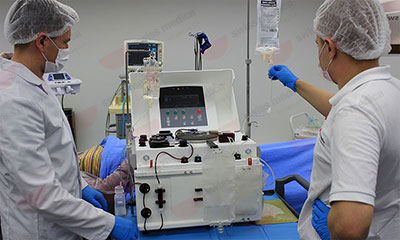 • Lack of risk and side-effects
• Lack of risk and side-effects
Swiss Medica stem cells treatment does not include chemotherapy. Instead, we use a “softer option” – Plasmapheresis, which is a blood filtration system that removes components of the immune system’s antibodies that actually cause the inflammation from the blood stream.
• Wider eligibility
Our doctors will assess each patient’s eligibility based on wide array of factors and possibilities of success. The decision does not exclusively depend on EDSS scale and age of the patient.
• Returning to normal life immediately after the treatment
Patients can get back to their jobs and everyday activities as soon as day finish the treatment. There is no required period of limited activities and socializing.
• Can be repeated
Swiss Medica treatment for MS can be repeated as many times as our medical team decides, using various stem cells sources if needed - unlike HSCT
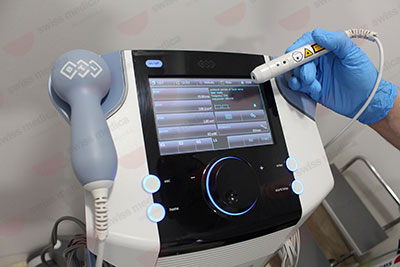 • Swiss Medica treatment does not include just Stem cells
• Swiss Medica treatment does not include just Stem cells
We use our vast knowledge, equipment and technology to “attack” MS from different directions:
- Stem cells treatments
- Neurometabolic therapy
- Micronutritional therapy
- Antiinflammation therapy
- Helation therapy
- Physiotherapy
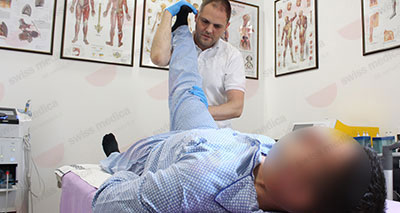
- Sparkwave
- Oxyven
- Xenon gas
- Laser Blood irradiation
- Psychotherapy



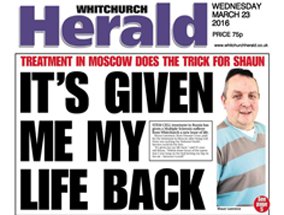

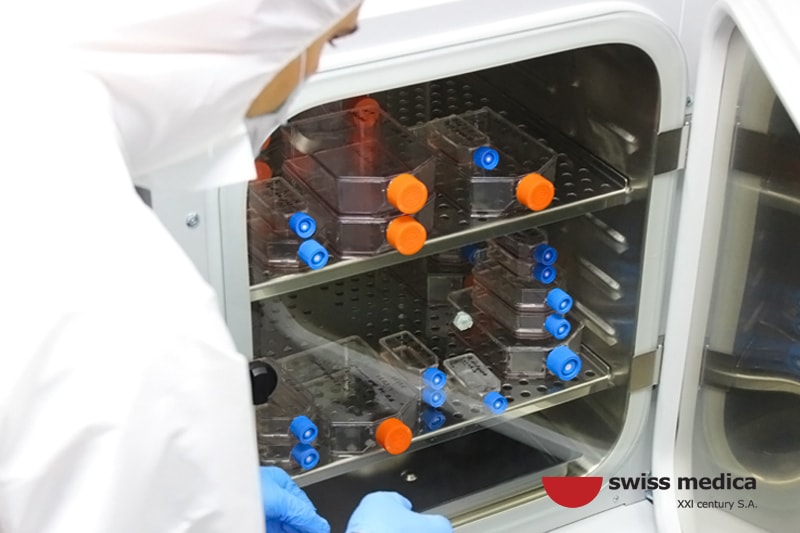



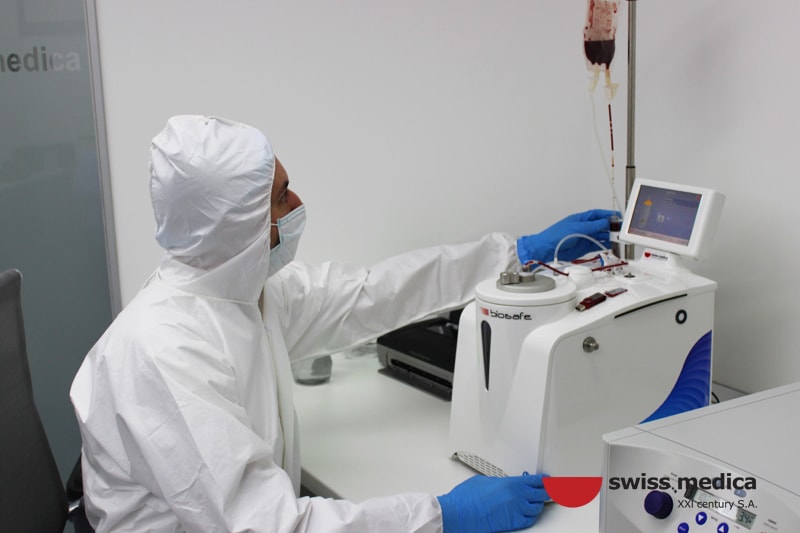

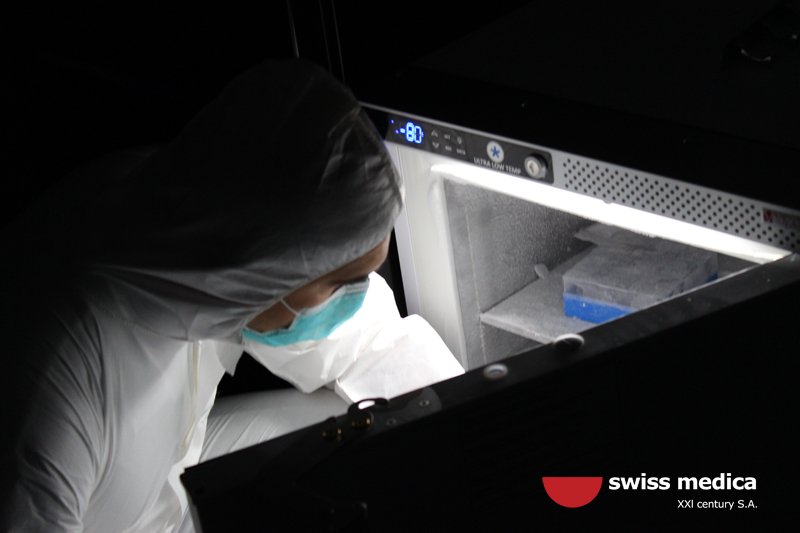
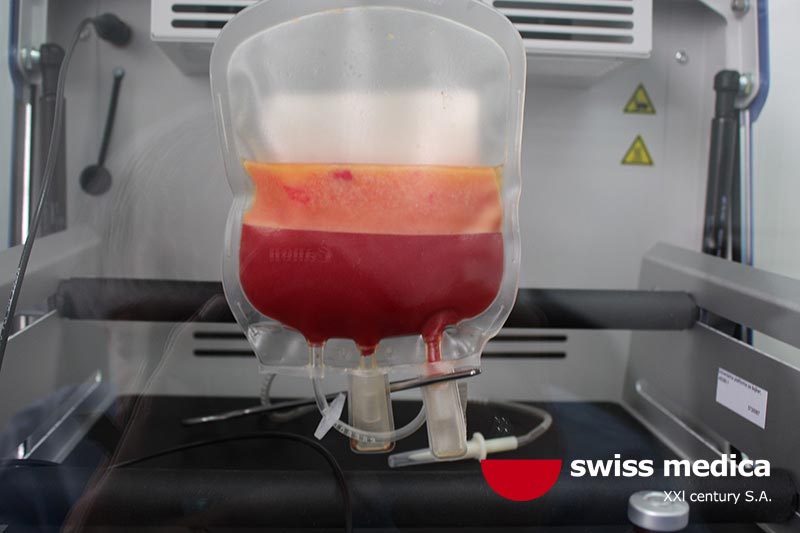
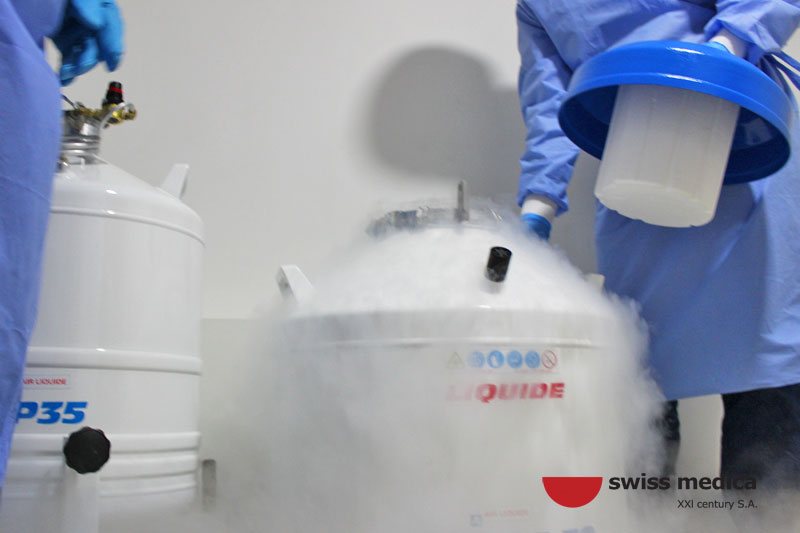
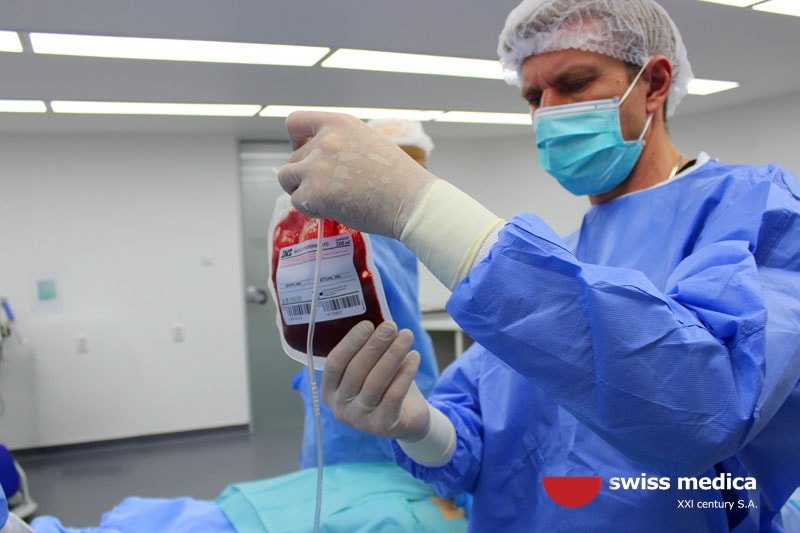
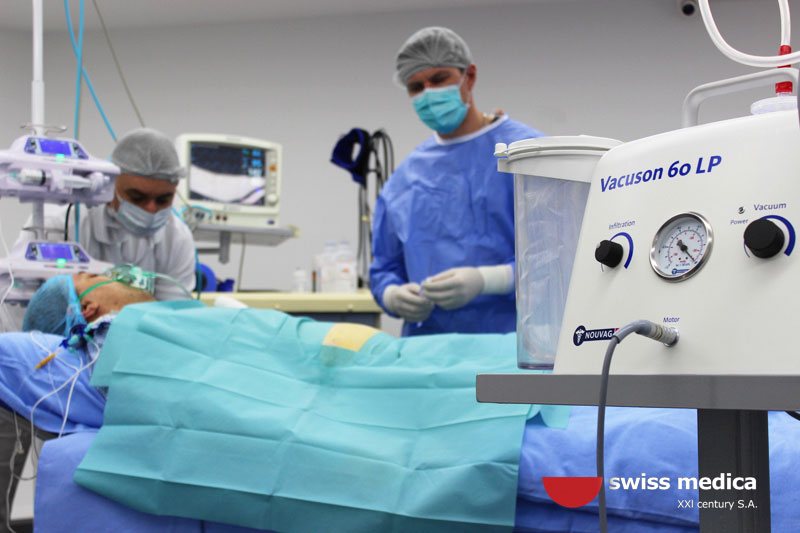
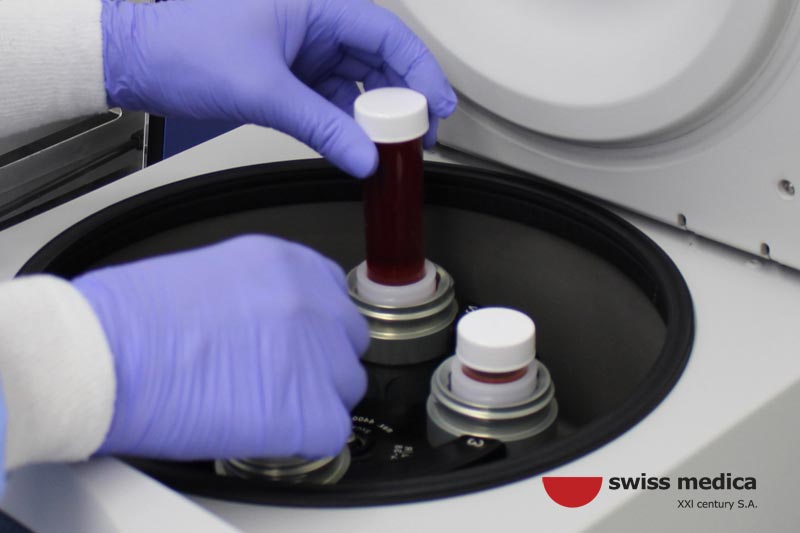
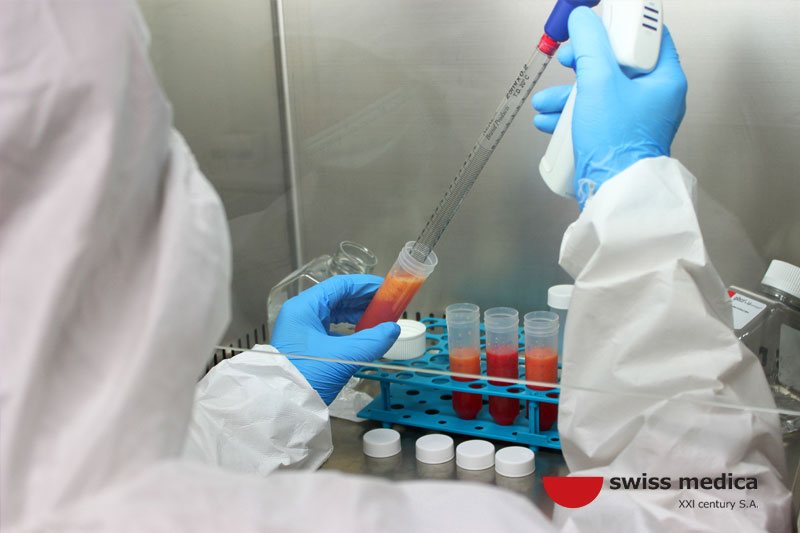
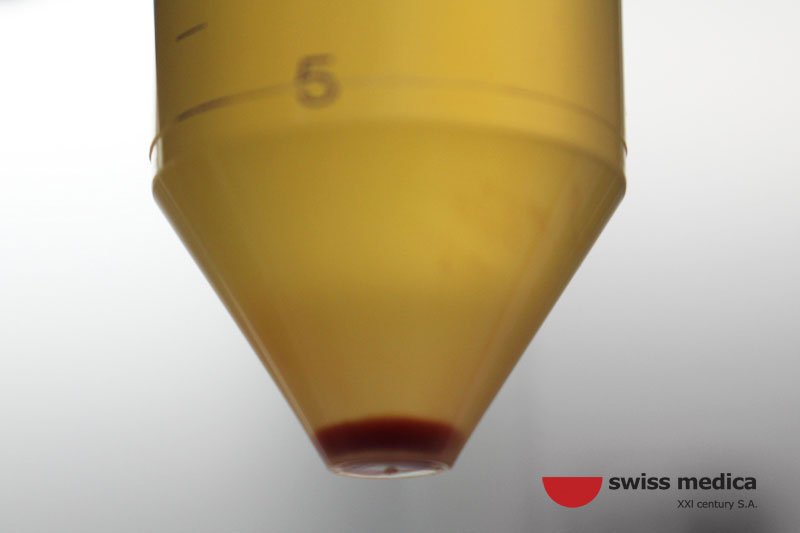
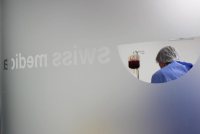
 MS is an autoimmune disorder affecting the central nervous system in which the myelin sheath (insulating covers of nerve cells in the brain and spinal cord) are damaged by person’s own immune system. Basically, the immune system becomes tricked into confusing the myelin sheath as a foreign matter. By doing what the immune system does best - defend the organism against the “foreign” attackers, signals from the brain to the rest of the body become compromised.
MS is an autoimmune disorder affecting the central nervous system in which the myelin sheath (insulating covers of nerve cells in the brain and spinal cord) are damaged by person’s own immune system. Basically, the immune system becomes tricked into confusing the myelin sheath as a foreign matter. By doing what the immune system does best - defend the organism against the “foreign” attackers, signals from the brain to the rest of the body become compromised. Not every MS patient is eligible for HSCT. MS patients that are excepted for HSCT must have Expanded Disability Status Scale (EDSS) equal or lower than 6.0. Further on, patients that are older than 40 years of age and had been diagnosed more than 5 years preceding their HSCT had poor treatment outcomes.
Not every MS patient is eligible for HSCT. MS patients that are excepted for HSCT must have Expanded Disability Status Scale (EDSS) equal or lower than 6.0. Further on, patients that are older than 40 years of age and had been diagnosed more than 5 years preceding their HSCT had poor treatment outcomes. Chemotherapy requires an insertion of Hickman line at the start of the treatment. A long silicone tube is inserted into a vein in the neck or under the collar bone that branches into, usually, two or three separate intravenous lines.
Chemotherapy requires an insertion of Hickman line at the start of the treatment. A long silicone tube is inserted into a vein in the neck or under the collar bone that branches into, usually, two or three separate intravenous lines. Isolation after chemotherapies is something that HSCT patients are often troubled with. Due to non-existing immune system, the patient is vulnerable to a wide variety of bacterial, fungal, viral infections and sepsis and therefore quarantined in the “clean room” without outside contact (no visitation from friends and family). Only a limited number of necessary medical personal have contact with the patient. Depending on the patient’s condition and the speed in which the immune system starts to rebuild itself the isolation lasts for no less than three weeks but in some cases, up to five months and more.
Isolation after chemotherapies is something that HSCT patients are often troubled with. Due to non-existing immune system, the patient is vulnerable to a wide variety of bacterial, fungal, viral infections and sepsis and therefore quarantined in the “clean room” without outside contact (no visitation from friends and family). Only a limited number of necessary medical personal have contact with the patient. Depending on the patient’s condition and the speed in which the immune system starts to rebuild itself the isolation lasts for no less than three weeks but in some cases, up to five months and more. For patients that have gone through HSCT and got their immune system “re-set”, the loss of pre-treatment immunity (including childhood vaccination) is inevitable and therefore post-chemo patients are considered as “never vaccinated” resulting in need for specific reimmunization, and some additional necessary vaccination (this includes family members and caretakers that the patient is in frequent contact) not otherwise mandatory for persons with regular immune system
For patients that have gone through HSCT and got their immune system “re-set”, the loss of pre-treatment immunity (including childhood vaccination) is inevitable and therefore post-chemo patients are considered as “never vaccinated” resulting in need for specific reimmunization, and some additional necessary vaccination (this includes family members and caretakers that the patient is in frequent contact) not otherwise mandatory for persons with regular immune system • Lack of risk and side-effects
• Lack of risk and side-effects • Swiss Medica treatment does not include just Stem cells
• Swiss Medica treatment does not include just Stem cells

